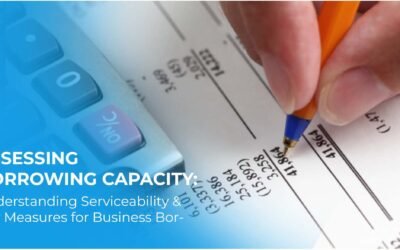Demystifying Business Finance Jargon: A Guide for Borrowers

Demystifying Business Finance Jargon: A Guide for Borrowers
Business finance can sometimes feel like a world of its own, filled with complex terms and acronyms. However, having a basic understanding of the common jargon used in business finance is crucial for borrowers. In this blog post, we will break down some commonly used words and acronyms, demystifying the language of business finance and empowering borrowers to make informed decisions.
APRA: Australian Prudential Regulation Authority
APRA is an independent authority responsible for supervising institutions in banking, insurance, and superannuation in Australia. Its role is to ensure the stability and soundness of the financial system.
BBSW: Bank Bill Swap Rate
BBSW is a short-term benchmark interest rate in the money market. It serves as a key base rate for commercial lending, along with Bank Bill Swap Bid Rate (BBSY). Understanding BBSW helps borrowers gauge prevailing interest rates in the market.

COLLATERAL
Collateral refers to assets provided by a borrower to secure a loan. These assets serve as assurance for the lender against significant loss in the event of default. Knowing what assets can be used as collateral is essential for borrowers seeking financing.
DSR: Debt Service Ratio
DSR is a measure of a business’s ability to make total loan repayments, including both interest and principal, relative to its EBITDA (Earnings Before Interest, Taxes, Depreciation, and Amortization). Lenders use DSR to assess a borrower’s repayment capacity.
EBITDA: Earnings before Interest, Taxes, Depreciation, and Amortization
EBITDA is a measure of performance that shows earnings before accounting and financial deductions. It provides insight into a business’s profitability and financial health.
LVR: Loan-to-Value Ratio
LVR is a ratio that compares the loan amount to the property or business valuation, expressed as a percentage. Lenders use LVR to assess the level of risk associated with a loan and determine the amount they are willing to lend.
G&I: Guarantee & Indemnity
G&I involves assuming responsibility for debt after the default of another party. A guarantee is a commitment to repay the debt, while an indemnity is a direct liability to compensate for a loss caused by a third party.
GSA: General Security Agreement
GSA is offered over a business’s general assets to provide security to the lender. It ensures that the lender has a claim on the business’s assets in the event of default.
IO Interest Only
IO refers to loan repayments that cover only the interest on the borrowed amount for a specific period. During this period, borrowers are not required to make principal repayments. Understanding IO terms is important for managing cash flow and planning for future repayments.
Default Interest
Default interest refers to the additional amount a bank may charge when a borrower defaults on a loan. It represents the cost to the bank, taking into account any potential recovery, and is often represented as a percentage of the total exposure at the time of loss.
P&I: Principal & Interest
P&I is the most common type of loan repayment, requiring payments toward both the loan principal and interest. The repayment amounts are determined based on the interest rate and the loan term.
NPAT: Net Profit after Taxation
NPAT represents the profit remaining after deducting taxes and interest and accounting for depreciation. It is an essential indicator of a business’s financial performance and profitability.
ROE: Return on Equity
ROE measures how efficiently a business uses its equity to generate profit. It is calculated by dividing net profit after tax by total equity. Understanding ROE helps assess a business’s financial performance and the return generated for the owners.
SERVICEABILITY: Capacity
Serviceability refers to a borrower’s capacity to service the loan without reasonable risk of default. Lenders calculate serviceability based on the overall net income position of the borrower, considering income sources and expenses.
Conclusion
Acquiring a basic understanding of business finance jargon is essential for borrowers navigating the loan application process. This guide has provided explanations of common terms and acronyms, helping borrowers communicate effectively with lenders and make informed financial decisions.
Remember, it’s always advisable to consult with financial professionals for personalized guidance based on your specific circumstances.
Disclaimer: The information provided in this blog post is for informational purposes only and should not be considered financial or legal advice. Always consult with a professional advisor or lender for specific guidance regarding your financial needs. Remember to book a meeting with our experts to discuss advice specific to your requirements here.





